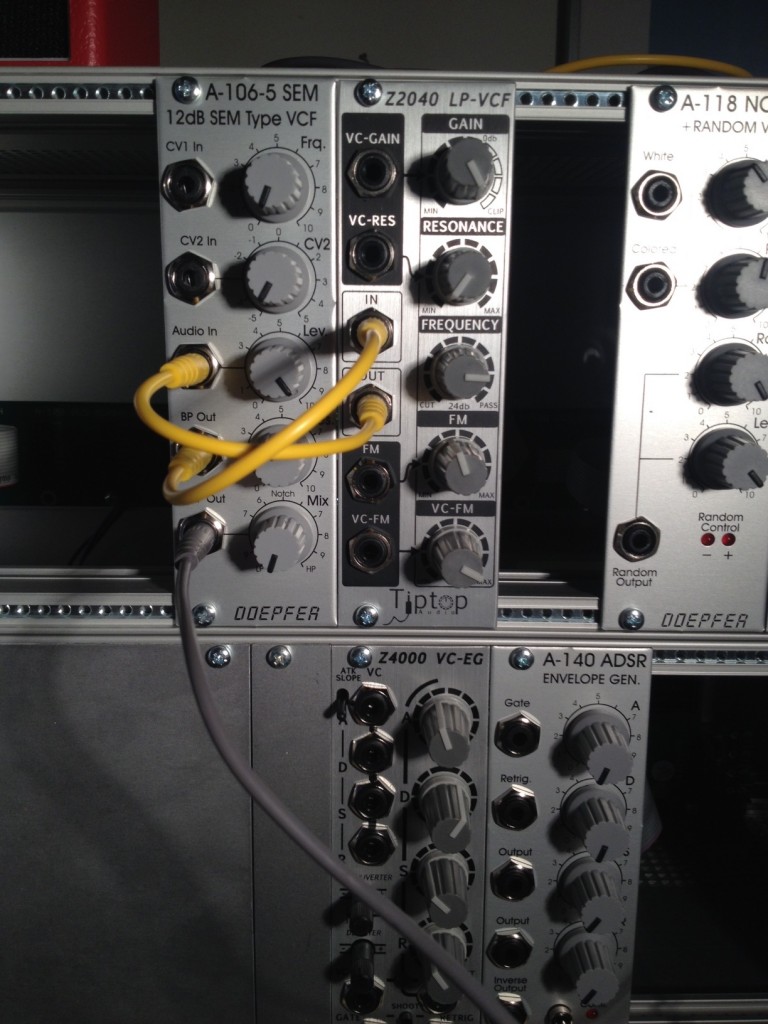I finally had the time to put the stuff I received together. The good news is that mounting the modules was a piece of cake. Every module arrived with a pre-attached ribbon cable and mounting screws. The A100-G6 enclosure is sturdy and well made with a power switch and an IEC socket on the back. I mounted all the modules and the blanking panels and hooked up the A-138 Mixer output to a small Behringer Eurorack (!) mixer that I had lying around and I was ready to go.
The bad news is that the USBStreamer B did not want to talk to the ES-3 module. The ES-3 would just flicker all its I/O LEDs and the big LED (which I think is a clock sync indicator) didn’t light up. Its hard to tell if the problem lies with the USBStreamer or with the ES-3 but I found one person with a similar problem and he/she could talk to the ES-3 with another ADAT interface so it is tempting to suspect the USBStreamer. Support has been requested and we’ll see how it pans out. This means the only means of triggering anything in the system is through the Z4000 ADSR trigger button. Since the oscillators are on order, testing the delivered modules was more interesting than expected.
I had to be a little creative to get the system to make some noise but I could wire up a simple patch that used the ADSR envelopes with a VCA and the noise generator to create a simple snare-type sound by using the trigger button on the Z4000 ADSR. The Z2040 filter self-oscillates nicely without any input so I could turn up the resonance to max and use the noise generator low-frequency output to control the frequency. This made the modular bleep and bloop on its own accord which was kind of cute.
Both the multiple and the S&H module were also missing from this first shipment so the patching options are definitely limited. The A-106-5 filter has two outputs, one band-pass filter output and one low-pass/high-pass output. I could use this as a kind of multiple so I could feed back the tone from the Z2040 filter into itself and use the Z2040 gain knob to distort the result to dirty things up a bit.
That turned out to be quite entertaining. With the resulting feedback loop I didn’t even have to have the resonance of the Z2040 turned up and I could control the pitch using the frequency knob on the A-106-5. Limitations begets creativity!

I have to say that I could probably spend a weekend playing with this thing, sans oscillators, if only I had the S&H and the multiple. Limitations can be creative but in this case I think I’ll need just a little bit more flexibility.
My first modular advice : Get a multiple. Oscillators are optional. Multiples are not.
My second modular advice : Get twice as many patch cables as you think you’ll need!
So did you ever get your ES-3 to work? Sync should happen automatically. Others have used the same adat with an ES-3 successfully.
Yep, I assume my USBStreamer had the wrong firmware on delivery. I wrote about my fix here and here.